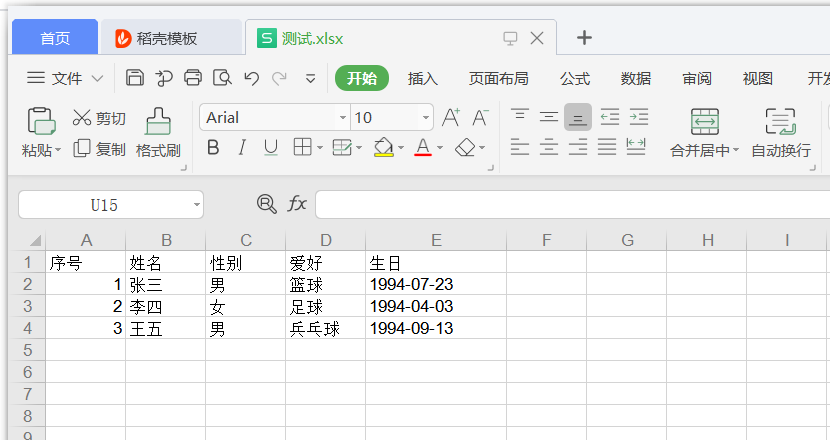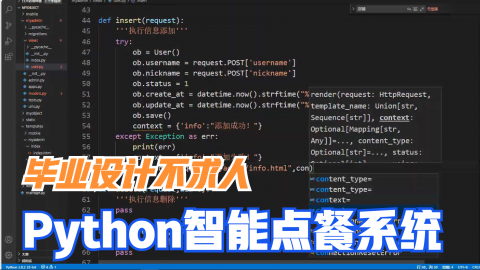一、代码
备注:封装好了(可直接调用)
""" -*- coding:utf-8 -*- @Time :2020/8/20 21:02 @Author :Jarvis @File :jar_excel_util.py @Version:1.0 """ from typing import List import xlwt class JarExcelUtil: def __init__(self, header_list: List[list]): """ :param header_list: 如下格式 例1:默认列宽 header_list = [ ['序号'], # 表格第0列[此列表头名称] ['姓名'], ['性别'], ['爱好'], ['生日'] ] 例2:自定义列宽(列宽值为int类型 英文字符长度 如:10 表示列宽为10个英文字符长度) header = [ ['序号', 5], # 表格第0列[此列表头名称,列宽] ['姓名', 10], # 表格第1列[此列表头名称,列宽] ['性别', 10], ['爱好', 10], ['生日', 20] ] """ self.data = header_list def write(self, out_file, data_body: List[list], sheet_name='sheet'): """ 写入数据 :param out_file: 保存文件(如:test.xlsx) :param data_body: data_body[0]为表格第0行数据 data_body[0][0]为表格第0行第0列单元格值 :param sheet_name: """ # step1 判断数据正确性(每行列数是否与表头相同) count = 0 for pro in data_body: if len(pro) != len(self.data): raise Exception( 'data_body数据错误 第{}行(从0开始) 需为{}个元素 当前行{}个元素:{}'.format(count, len(self.data), len(pro), str(pro))) count += 1 # step2 写入数据 wd = xlwt.Workbook() sheet = wd.add_sheet(sheet_name) # 表头 for col in self.data: # 默认列宽 if len(col) == 1: sheet.write(0, self.data.index(col), str(col[0])) # 自定义列宽 if len(col) == 2: sheet.write(0, self.data.index(col), str(col[0])) # 设置列宽 sheet.col(self.data.index(col)).width = 256 * col[1] # 15个英文字符 # 表体 index = 1 for pro in data_body: for d in self.data: value = pro[self.data.index(d)] # 若值类型是int、float 直接写入 反之 转成字符串写入 if type(value) == int or type(value) == float: sheet.write(index, self.data.index(d), value) else: sheet.write(index, self.data.index(d), str(value)) index += 1 wd.save(out_file) if __name__ == '__main__': header = [ ['序号', 5], ['姓名', 10], ['性别', 10], ['爱好', 10], ['生日', 20] ] # header = [ # ['序号'], # ['姓名'], # ['性别'], # ['爱好'], # ['生日'] # ] body = [ [1, '张三', '男', '篮球', '1994-07-23'], [2, '李四', '女', '足球', '1994-04-03'], [3, '王五', '男', '兵乓球', '1994-09-13'] ] JarExcelUtil(header_list=header).write(out_file='测试.xlsx', data_body=body)
二、效果
生成的Excel

三、常用操作
3.1、设置行高
# 行高(第0行) sheet.row(0).height_mismatch = True sheet.row(0).height = 20 * 20 # 20为基数 * 20榜
3.2、设置列宽
# 列宽(第0列) sheet.col(0).width = 256 * 30 # 256为基数 * 30个英文字符(约)
3.3、冻结(列与行)
# 冻结(列与行) sheet.set_panes_frozen('1') sheet.set_horz_split_pos(2) # 冻结前2行 sheet.set_vert_split_pos(3) # 冻结前3列 # 冻结首行 sheet.set_panes_frozen('1') sheet.set_horz_split_pos(1) # 冻结前1行(即首行)
3.4、设置单元格对齐方式
# 设置对齐方式 style_1 = xlwt.XFStyle() al_1 = xlwt.Alignment() al_1.horz = xlwt.Alignment.HORZ_CENTER # 水平居中 al_1.vert = xlwt.Alignment.VERT_CENTER # 垂直居中 style_1.alignment = al_1 sheet.write(0, 0, '第0行第0列单元格值', style_1)
内容来源于网络如有侵权请私信删除
文章来源: 博客园
- 还没有人评论,欢迎说说您的想法!





 客服
客服


